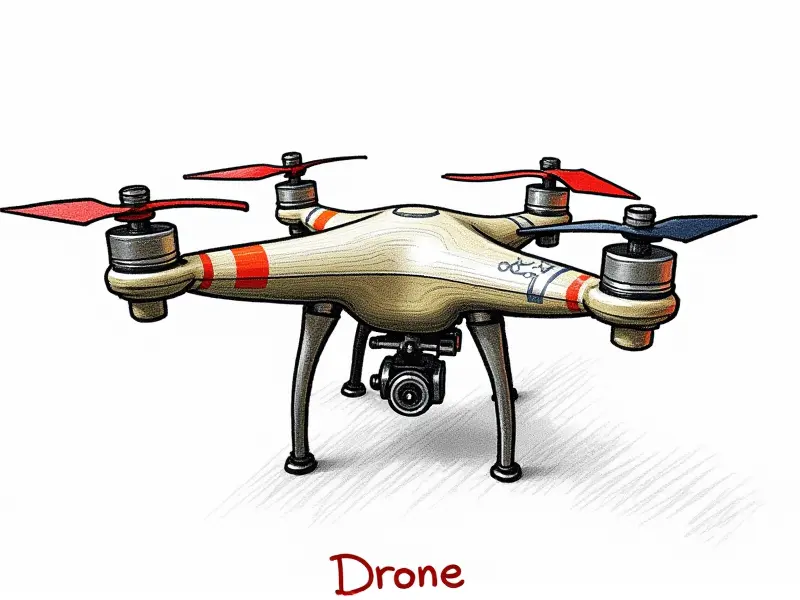What is FPV RC drone?

First Person View (FPV) drones have taken the world of remote-controlled aircraft by storm, captivating enthusiasts and hobbyists alike with their thrilling aerial experiences. These high-tech flying machines offer a unique perspective that goes beyond traditional drone operation, providing an immersive flight experience that rivals the excitement of first-person racing games.
Why FPV Drones are Popular
The popularity of FPV drones stems from several key factors:
- Immersive Flight Experience: The ability to see and control a drone in real-time, as if you were sitting on the aircraft itself, makes FPV flying incredibly engaging.
- Speed and Agility: FPV drones are designed for speed and maneuverability, allowing pilots to perform sharp turns, flips, and other aerobatic maneuvers with ease.
- Social Aspect: The community around FPV drone racing is vibrant and supportive, offering opportunities for competition, camaraderie, and shared learning experiences.
Introduction to FPV Racing Drones
FPV racing drones are specifically engineered for high-speed flight and dynamic aerial maneuvers. These small, agile quadcopters feature advanced electronics and lightweight materials that enable them to reach impressive speeds while maintaining stability and control. The primary objective of an FPV racer is to navigate through challenging courses as quickly as possible.
Understanding FPV Drone Technology
The technology behind FPV drones involves several key components:
- Gimbal Camera: A camera mounted on a gimbal system ensures stable video transmission, even during rapid movements and maneuvers.
- Video Transmitter (VTX): This device sends the live feed from the drone's camera to goggles or monitors worn by the pilot.
- Pilot Equipment: FPV goggles provide a clear, real-time view of what the drone sees. Additional equipment includes telemetry modules and GPS systems for enhanced control.
Basics of FPV Quadcopters
An FPV quadcopter is a multirotor aircraft with four rotors arranged in an X or + configuration. This design provides optimal balance, stability, and agility. Each rotor is powered by an electronic speed controller (ESC) connected to a flight controller board that manages the drone's movements.
How FPV Drones Work
The operation of an FPV drone involves several interconnected systems:
- Camera and VTX: The camera captures video footage, which is transmitted wirelessly to a receiver on the ground via the VTX.
- Pilot's Goggles or Monitor: Pilots wear goggles that receive the live feed from the drone, allowing them to see exactly what the drone sees.
- Flight Control System: The flight controller processes input from sensors and controls motor speed through ESCs for precise maneuvering.
Exploring the World of FPV
The world of FPV drones is vast and diverse, encompassing various subcategories such as racing, freestyle flying, and aerial photography. Each category offers unique challenges and opportunities:
- Racing: Competitive events where pilots race through courses marked by gates or obstacles.
- Freestyle: Creative flying that emphasizes skillful maneuvers and aerobatics.
- Aerial Photography: Using FPV drones for capturing stunning aerial shots of landscapes, events, and more.
Getting Started with FPV Drones
If you're new to FPV flying, here are some essential steps to get started:
- Select a Beginner-Friendly Kit: Opt for pre-assembled kits designed for newcomers.
- Learn Basic Controls: Familiarize yourself with the throttle, pitch, roll, and yaw controls.
- Practice in Safe Areas: Begin flying in open spaces away from people and obstacles to build confidence and skills.
What Makes FPV Drones Special?
The unique features of FPV drones set them apart from traditional RC aircraft:
- First Person View (FPV): The ability to see the world from the drone's perspective adds an element of excitement and immersion.
- High-Speed Performance: Designed for speed, FPV drones can reach velocities that exceed 100 mph in competitive settings.
- Customizability: Pilots can tailor their setups with various components to optimize performance based on specific needs and preferences.
FPV Drone Setup Guide
Setting up an FPV drone involves several steps. Here’s a basic guide:
- Assemble the Frame: Start by mounting the motors, ESCs, and flight controller.
- Add Propellers: Attach propellers to the motor shafts securely.
- Install Battery: Connect a high-capacity LiPo battery for extended flight times.
- Mount Camera & VTX: Position the camera and transmitter on the frame, ensuring they are balanced and secure.
FPV Drone Features
Modern FPV drones come equipped with a range of features that enhance performance and safety:
- Battery Management System (BMS): Monitors battery health and prevents overcharging or deep discharging.
- Telemetry Module: Provides real-time data on drone status, including voltage, current, altitude, and temperature.
- GPS Module: Assists in maintaining stability during autonomous flight modes.
First Person View Explained
The concept of First Person View (FPV) is central to the appeal of FPV drones. It allows pilots to experience flying as if they were onboard the aircraft, providing a thrilling and immersive perspective:
- Enhanced Control: Real-time video feedback enables precise control over drone movements.
- Sense of Presence: The live feed creates an engaging and exciting flying experience that feels like being in the cockpit.
Conclusion
FPV drones represent a cutting-edge evolution in remote-controlled aircraft, offering unparalleled excitement and immersion. Whether you're interested in competitive racing, creative freestyle maneuvers, or stunning aerial photography, FPV technology provides an incredible platform for exploration and enjoyment. As the hobby continues to grow, new innovations will undoubtedly push the boundaries of what's possible with these remarkable flying machines.

